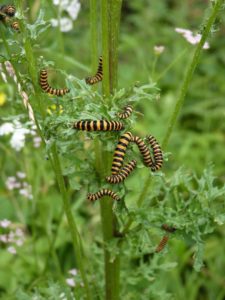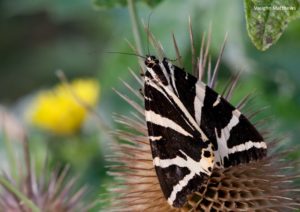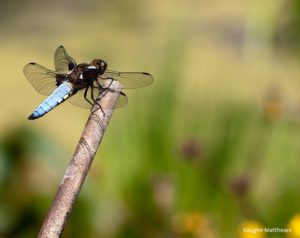
Challenging the acceptance of gradual change in our natural world
There is something afoot in our natural world. It is hard to detect and even harder to shake. That’s because, when it comes to insect decline, we are under the influence of the ‘shifting baseline syndrome,’ says science writer David Urry.
How can you tell?
When it comes to the perilous state of insects, there aren’t many signs of the shifting baseline syndrome. In fact, that’s the problem – everything seems absolutely ‘fine’ and ‘normal’.
This can result in an apathy, or indifference to worrying rates of insect declines. It also leads to a lack of imagination and ambition in tackling the problem. There are clues it is happening, if you look closely, but they are easy to miss.
This is not ‘normal’
Within a century, the abundance of insects, the sheer number of them in the landscape,  has declined enormously. Since we have formally started counting, it is estimated that populations of wild insects could be declining by 2.5% on average each year worldwide, with over 41% threatened with extinction.
has declined enormously. Since we have formally started counting, it is estimated that populations of wild insects could be declining by 2.5% on average each year worldwide, with over 41% threatened with extinction.
How are we missing this?
What we consider to be ‘normal’ is based on what we experience in our own lifetime. For this current generation, that means drastically fewer insects; the previous insect abundance and riches that existed are forgotten, or more specifically, they were never known to this generation.
Loss that occurs over generations goes unnoticed; it’s this moving of reference points – a shifting baseline syndrome – which creates generational amnesia.
There is another element though – personal amnesia: where an individual accepts a new, lesser standard over time. Even those born at a time when there were many more insects around can easily forget what it was like. Change over our lifetime doesn’t always register and our idea of what is normal slowly slides.
We may have lost half of all insect numbers since the 1970s (some studies suggest it is even more), yet most of us have barely noticed.
 How does it happen?
How does it happen?
A collective short-term memory is the main cause of shifting baseline syndrome. We only have reliable records from the 1970s onwards, even for our best-recorded insects, the butterflies and moths. For other insects, we are much more in the dark. We have no idea how many insects there were 100 years ago, before intensive farming and widespread pesticide use.
The fact that very few people have been paying attention, or talking about insects, means we lack evidence of this change. This lack of available information means our baselines, the level that we judge normality by, easily shift.
Here’s an example.
In 2012, the meadow brown was the must abundant butterfly recorded in Butterfly Conservation’s Big Butterfly Count, up 186% on previous years. Great news: a positive butterfly story! However, compared to records from the 1970s, the 2012 level of meadow brown abundance was just plain average – ‘normal’.
What seems spectacular now, was simply normal 50 years ago. Yet, let’s not forget that 50 years ago things were already broken. Imagine what level of butterfly abundance was ‘normal’ 100 years ago.
Is it serious?
For many years, many centuries in fact, shifting baseline syndrome probably wouldn’t  have mattered. Change in landscapes and assemblages of animals, often as a result of humans, have been happening for years. But now we know it is happening faster than ever before in human memory, and we now know that we must take action for insects before it’s too late.
have mattered. Change in landscapes and assemblages of animals, often as a result of humans, have been happening for years. But now we know it is happening faster than ever before in human memory, and we now know that we must take action for insects before it’s too late.
The problem is that shifting baseline syndrome doesn’t just make it hard for us to realise the full extent of insect declines that have occurred, it also limits our imagination and ambition on how much better we can improve the situation. Our aspirations are checked by the narrow reference points we commonly use or have at our disposal. It’s time to blow these wide open.
We need to open our eyes to what is possible and recognize what we have been missing out on for too long. Our hedges, fields and cities were once and could be again full of butterflies and bees, along with wildflowers, birds, hedgehogs, and all the other wildlife that depend on insects. It is not about going back in time, but by taking Action for Insects now, armed with a shared understanding of just how rich, diverse and abundant our landscape can really be.
What we have now is not ‘normal’ and we should not accept it.
Turning the shifting baseline on its head
There are easy steps we can all take to improve the situation for our insects and open-up our eyes to the current reality and the possibilities ahead.
As part of our ongoing Action for Insects campaign, we launched a guide to help people take practical steps to help insects in their homes and gardens.